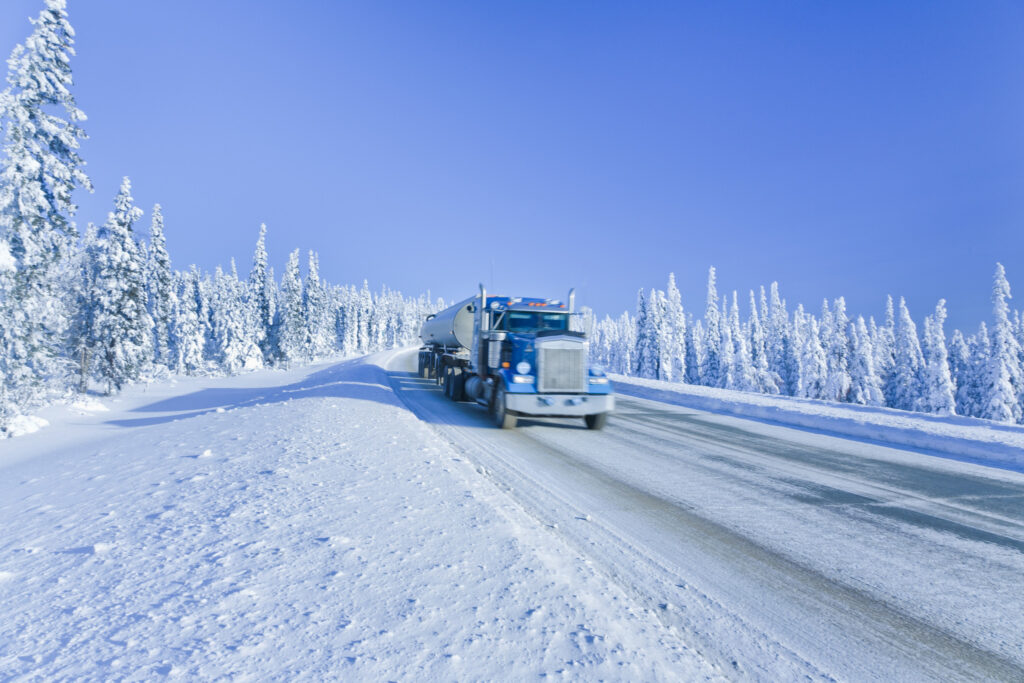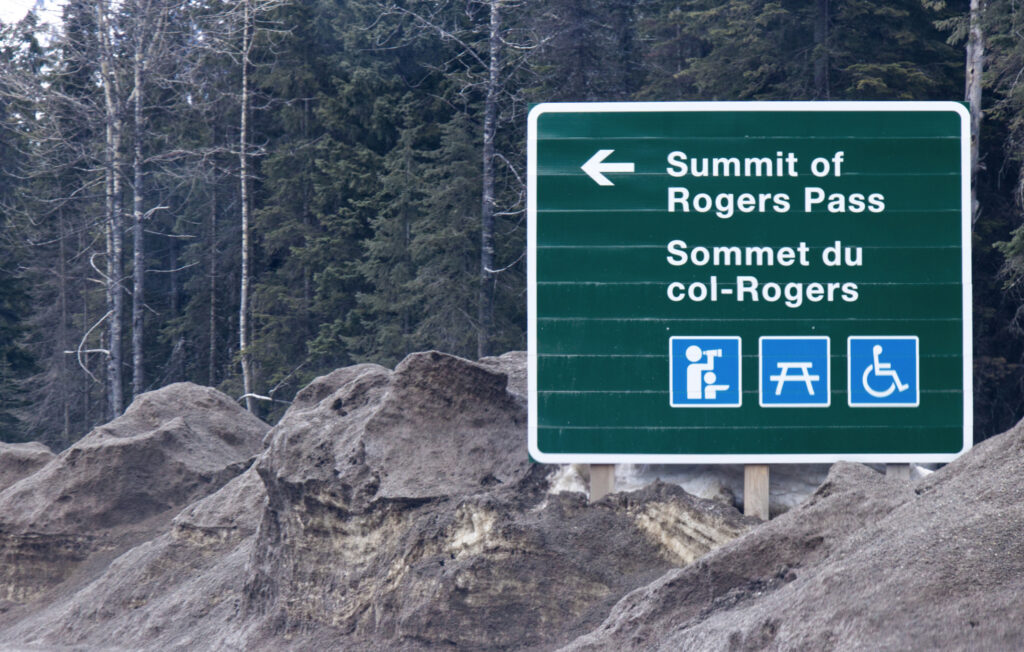How to safely descend mountain grades
Driving through B.C. may offer up scenic views and mountain vistas, but it also poses challenges to drivers that most other provinces in Western Canada lack.
With its steep grades, twists and turns, and perilous mountainside drop-offs, drivers must navigate some the most treacherous terrain, and brake management is essential.

As Andy Roberts, president of Mountain Transport Institute, a driver training school in Castlegar, B.C., explains, drivers of all types of vehicles need to shed the habit of using their service brakes to slow down while descending a hill.
“They shouldn’t even be using their brakes,” Roberts said of truck drivers traveling down mountain grades. “Your brakes are designed to stop you, or to slow you down for a downshift. Brakes were never designed in any vehicle – big trucks, cars, pickup trucks – to hold you back while going down a hill.”
Roberts said when it comes to incidents where a truck’s brakes seize up, or even catch fire – as was reported to have happened several times this summer in the Kamloops, B.C. area – it is usually a case of the driver descending a steep grade too fast and being forced to apply their brakes.
“They need to slow down at the top of the hill and select the gear that’s going to allow them to descend the grade using their auxiliary braking systems,” said Roberts, “like their engine brakes or their retarders, or whatever their vehicle is equipped with.”
Roberts said service brakes need to be kept cool in the event a driver comes across an emergency situation, like an accident, a rock slide, or even engine brake failure, so they can apply the brakes to bring the truck to abrupt stop.
Peter Faminoff, owner of Columbia Driver Training Centre in Port Coquitlam, B.C., said many drivers who are inexperienced with B.C.’s terrain must resist the urge to rely on their service brakes.
How drivers manage and use their brakes has to be ingrained early on in a driver’s career, which is why training schools play a significant role.
“When they teach the air brake course, 99% of the teachers only teach paper knowledge and no practical knowledge,” claimed Faminoff, adding that instructors need to inform new drivers how to properly descend steep grades. “I teach that if your brakes are properly adjusted, you use the proper gear, your engine as a retarder, and very little brakes, you’ll never get into trouble. But 99% of the students that I talk to, they look at you with this dumb look on their face.”
6 psi: The magic number
Faminoff said he teaches his students that if they’re going up a hill in in fourth gear, they should be in second or third gear going back down.
“Then you only use about a six-psi brake application,” he said. “At a six-psi brake application the system will take care of itself, it will dissipate the heat. If you analyze everything in perspective, you stay out of trouble, but if you don’t understand that and nobody teaches it to you, you get in trouble.”
Dave Earle, president and CEO of the B.C. Trucking Association agreed that slowing down a heavy truck is all about gear selection and speed.
“Drivers use the compression of the engine to manage the energy created as they move down a grade,” said Earle. “If the gear is too high, the engine will not be able to maximize compression resistance, increasing speed and meaning that other braking systems will have to be used to supplement. This supplementing is fine, as long as no system is overloaded. It’s all about managing dynamic energy.”
To make things more perplexing for drivers is that there are little to no warning signs that the brakes have become too hot. Faminoff said the most obvious indicator the truck’s brakes are seizing up is that the brake pedal no longer works. By then it’s too late.
“The warning sign is that you’re pressing harder (on the brakes) and you have no brakes,” he said. “It doesn’t matter how hard you press it, it does nothing.”
So, what does a driver do if they are in a situation where their brakes are gone?
“You’re dead,” cautioned Faminoff, saying he does not hold back when telling his students of the danger of not utilizing the braking system properly. Roberts added that along with an unresponsive brake pedal, a driver may see smoke coming off the wheels if their brakes have seized up.
“As the brakes heat up, the drums expand away from the shoes,” he said. “So, we either build enough heat to start a fire or the drums get hot enough and expand enough that the brakes literally don’t work anymore.”
Let the engine brake do its job
Roberts agreed with Faminoff that when drivers ascend a steep grade, they should descend in a similar or lower gear to contain the speed of the truck, as the engine brake will play a vital role holding back the momentum.
“It’s horsepower up the hill, it’s braking horsepower down the hill,” said Roberts. “The mistake that drivers make is that they are in too big a hurry.”

Using the drive from Calgary, Alta., to Vancouver, B.C., as an example, Roberts said drivers can be fooled by the size of the downhill grades, as these tend to increase the further west you go.
“There are a bunch of hills between (Calgary) and Vancouver, and a lot of the hills through the Roger’s Pass and places like that are shorter. So, drivers run off them at speed using their service brakes, and the hill is over before they build up too much heat,” Roberts explained. “But when you get in the area of the Coquihalla from Kamloops to Merritt, and Merritt down to Hope, the hills are a lot longer, so when they attempt to use the same technique – which is the wrong technique – before the hill ends, they overheat their brakes and get themselves into a heap of trouble.”
Take advantage of brake checks
Roberts said brake check areas serve a couple purposes, one being to get the driver to pull over and stop so they do not “break” over the crest the hill and descend at too high a speed. It also gives drivers the opportunity to make sure their brakes are properly adjusted, something he feels a lot of drivers overlook.
“The quality of driver on the highway today, we don’t see the level of professionalism we have seen in years past,” Roberts said. “I run into a lot of drivers who just don’t take this quite as seriously as I would like them to. It’s a lot of weight, and it’s a lot of responsibility.”
Brad Zall, health and safety advisor for SafetyDriven, Trucking Safety Council of B.C., told Today’s Trucking that drivers should be checking that their air compressor has a full reservoir, there are no air leaks, gladhands and air lines are secure, push rod travel is within tolerance on all brake chambers, drums, bearings, brake lines, and tires are not hot or showing excessive wear, and that there are no broken components on the braking system.
B.C. has its share of high mountains summits on its network of highways, with the three highest elevations being Kootenay Pass from Salmo to Creston (1,774 meters), Pennask Summit 50 kms east of Merritt (1,728 meters), and Kicking Horse Pass in Yoho National Park (1,643 meters).
Have your say
This is a moderated forum. Comments will no longer be published unless they are accompanied by a first and last name and a verifiable email address. (Today's Trucking will not publish or share the email address.) Profane language and content deemed to be libelous, racist, or threatening in nature will not be published under any circumstances.
I’m a 26yr veteran with versatile amounts of experience from tandem, to oversize heavy haul under my belt, on and off Rd. My biggest concern I have descending is the individuals coming up behind me. Currently I am Super B flatbed and I descend all mountain grades with my 4 ways flashing and in the right gears, to not have to touch my tredle valve (brake pedal) ever. It’s happened on many occasions with trucks coming up behind to fast and not judging the descend and they get lucky with being able to go around me, but one day it may not be clear for them to do so, and may plow into my unit from behind because of. Experience or lack of experience is one thing, but being to cocky and to comfortable is also a mountain killer. If some of these individuals would look at it as, this mountain is trying to kill me (same method I tell myself getting onto my speed bike) before they descend they may actually get off the phone etc, and focus more on the descend and there lives on the other side of it.
You should also have your engine fan on manual this will help slow the engine down it takes 35-50 H.P. to turn engine fan depending on the engines R.P.M. this will help save your brakes in most cases I never have use my service brakes at all
-
I have been driving, professionally, for about 20 years. I love articles like this because it is a great refresher and, usually, I pick something else up. I am a firm believer in the use of alternate forms of breaking apart from my service breaks.
This is my first winter driving an automatic…..I have not seen, or been able to find, any solid resources for winter driving. Again, I also believe that my service brakes are for stopping my unit(currently super b propane bottles). As I have quite a few ascent and descent hills at 10%+ where I operate, it would be nice if anyone had some resources involving that.
I always like getting info from other people to add to my own driving library.
Thanx -
Apparently I put my reply to the article under your comment. Ooops.
I did want to say that I just found out about the fan trick this past spring. A logger buddy of mine told me about that trick and all I could think was….that makes to much sense. Lol. Great little trick!!
This article should be required teaching in ALL truck training schools!
I drove for many years and I learned that the old adage “use the same gear to go down a hill as you did to go up” will get you in serious trouble.
When I was an OTR trainer I tried to spend any spare time going over the areas that were just skimmed over in class.
The old saying ” You can go down a hill many times too slow but only once too fast” is still true!
I think the mayhem on the roads is due to poor training and dispatchers who try to dispatch trucks at 100 kph! (Yes I know of a company near me that does that!) .
I’ve been through the mountains just used your head and everything will run smoothly
Great advise. As a retired trucker, I can really relate to this story haveing spent many years running west out of Alberta. All truckers should read it.
Thanks for that.
I am the safety manager at Preferred Carriers. During the orientation we watch the video Making the Grade. It is about going down hills in BC without having a run away. And what causes a run away. We then discuss the video and I state to them to be in the right gear BEFORE starting down the grade. If the sign says 40 KPH have your truck in the gear that you would normally drive the truck in before starting down the grade.